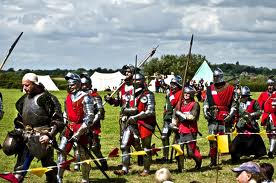





















Parts of Jessop House date back to the 12 century with it being one of four houses built in Tewkesbury the same time as the Abbey.and over time has formed part of the Abbey School, being one of the oldest houses in Tewkesbury and one of historical importance, however over the years it has had various usage from a doctors’ house and surgery to it being known as the last house of ill repute in Tewkesbury, if only walls could talk……….. it could tell a tale or two.
Dr Jessop of Jessop House is one of the characters in the Dinah Craik (1826 -1887) novel John Halifax Gentlemen a noble presentation of the highest ideal of English middle class life, which over the years has been adapted for film and television.
Upon entering through the front door you are stepping back in time onto an original cotswold stone floor, worn in parts where the butler stood to allow the gentry to enter the house, a magnificent Georgian staircase leads to four spacious light bedrooms, one being the original Georgian sitting room with its elegant fireplace and beautiful plaster-work adorning the ceiling. Many of the original features of the house have been retained including glorious fireplaces, one being an original delpt fireplace with hand painted tiles dating back three hundred years.
To the rear of Jessop House the medieval staircase leads to four well appointed bedrooms. Notice the priest holes in the wall leading to the first floor landing.
After the Battle of Tewkesbury in 1471, so much slaughter took place in its magnificent 12th century Abbey that it had to be reconsecrated. Scars of this are still visible. In 1539 the Abbey was saved from destruction by the townspeople who paid Henry VIII £453 for it – its scrap value – or the worth of its lead and bells. It still dominates the town, its massive Norman tower the largest in Europe. Floodlit at night, it is an unforgettable sight which can be seen from each of the suites.
The front cellar of Jessop House has a connecting tunnel to the Abbey, through which the Monks could escape to the river in times of danger. Many of the properties on Church St have connecting cellars with the Abbey and in the aftermath of the Battle of Tewkesbury many Lancastrian troops escaped the slaughter by fleeing through these tunnels to the river.
Tewkesbury’s alleys, a picturesque feature of the town, were created shortly after the Norman Conquest as a result of thwarted passion – a story in itself. These, together with the medieval houses and the two rivers (with the “Ham” between them), are affectionately and amusingly described in John Moore’s novel “Portrait of Elmbury”.
Tewkesbury gateway to the Cotswolds is set in beautiful “Heart of England” countryside, only one mile from Junction 9 of the M5, and three miles from Junction 1 of the M50, Tewkesbury is an unrivalled centre for touring Shakespeare country, the Malverns, elegant Cheltenham with its exclusive shops, famous racecourse and festivals of art, literature and music, the Cotswolds (an area of outstanding natural beauty), Winchcombe (the 9th century capital of Mercia), “Roman” Cirencester and Bath, the Wye Valley, Forest of Dean and so many more delightful places, all rich in recreational, cultural and sporting facilities.
